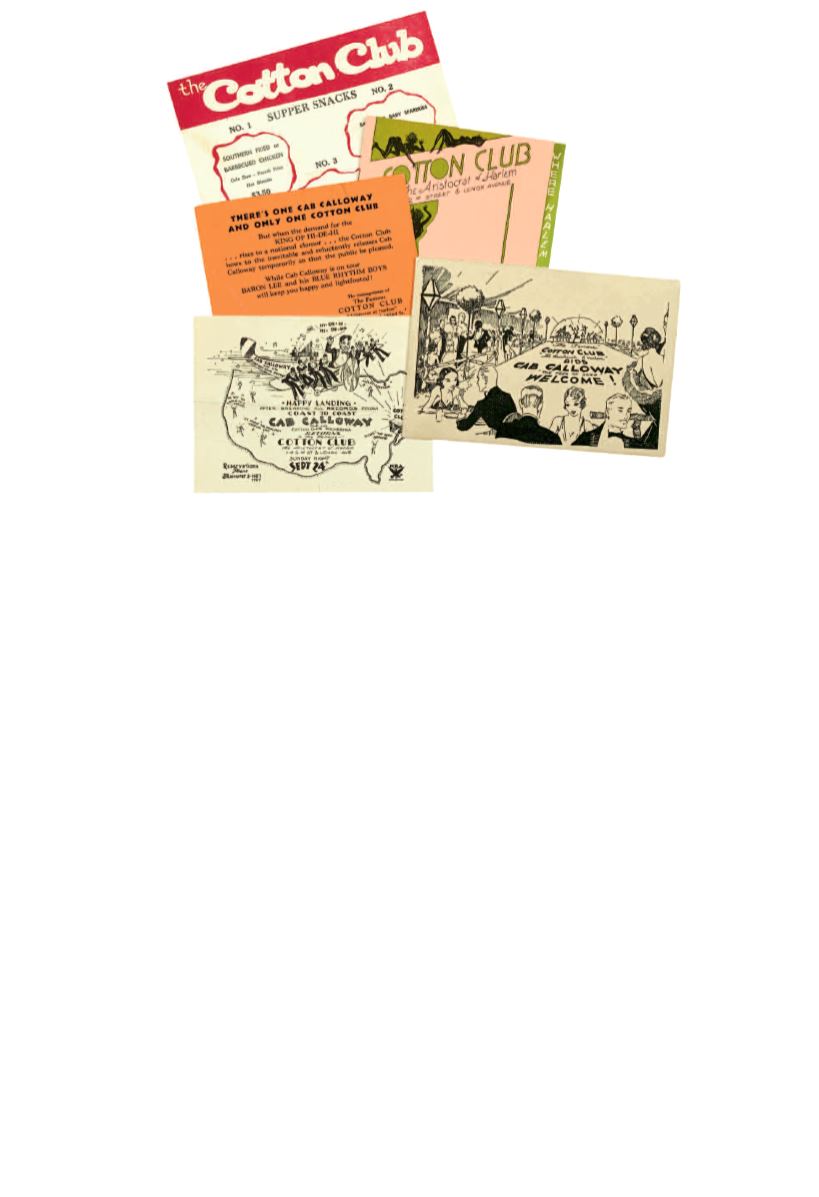

413
412
●
(MUSIC—CALLOWAY, CAB). VAN VECHTEN, CARL.
17 gelatin silver print
photographs of Cab Calloway.
Each approximately 9 x 6
3
/
4
inches; each bear Van Vechten’s
notes and date in red on the reverse.
[New York], 12 January 1933
[3,000/4,000]
A variety of poses in Carl Van Vechten’s typically strange manner, some with a background of wallpa-
per that has as its design “Repeal 18th Amendment,” referring to Prohibition. Carl Van Vechten
(1880-1964), was a white intellectual, art critic, writer, and photographer who attached himself to the
Harlem Renaissance, and its figures.
413
●
(MUSIC—CALLOWAY, CAB.)
A fine grouping of programs for the early
appearances of Cab Calloway.
Five pieces of early Cotton Club memorabilia, including
a rare moveable program from 1932. All in very good condition.
SHOULD BE SEEN
.
New York, circa 1931-1933
[500/750]
Cotton Club bids Cab Calloway Welcome * Happy Landing after Breaking all Records Coast to
Coast, Cab Calloway Returns to the Cotton Club * Cotton Club, the aristocrat of Harlem, Fall
Premiere * There’s Only One Cab Calloway and Only One Cotton Club * The Cotton Club,
Super Snacks 1 and 2. One the programs features an image of Calloway with baton in hand which
moves across the page with the band in the background as you open it.
414
●
(MUSIC—CALLOWAY, CAB.)
“The Missourians” (supplied title).
Early
gelatin silver print photograph of the Cab Calloway orchestra, 5
3
/
4
x 7
5
/
8
inches, dry-
mounted to a piece of cardstock; a couple of notes on the reverse suggest this was used for
illustration in a book or article.
[New York], circa 1930
[600/900]
Cab Calloway and “Missourians” shot around 1930 possibly at the Cotton Club, where they were
the currently featured house band, a replacement for the Duke Ellington orchestra which was on tour.
Calloway had taken over a brilliant but failing band called “The Missourians” in 1930. But
Calloway quickly proved so popular that the two began to trade off; when the Ellington group was on
the road they played, when they toured the Wellington band was back, Winchell’s radio program and
with Bing Crosby in his show at New York’s Paramount Theatre. As a result of these appearances
both Calloway and Ellington’s bands broke the major broadcast network color barrier.









